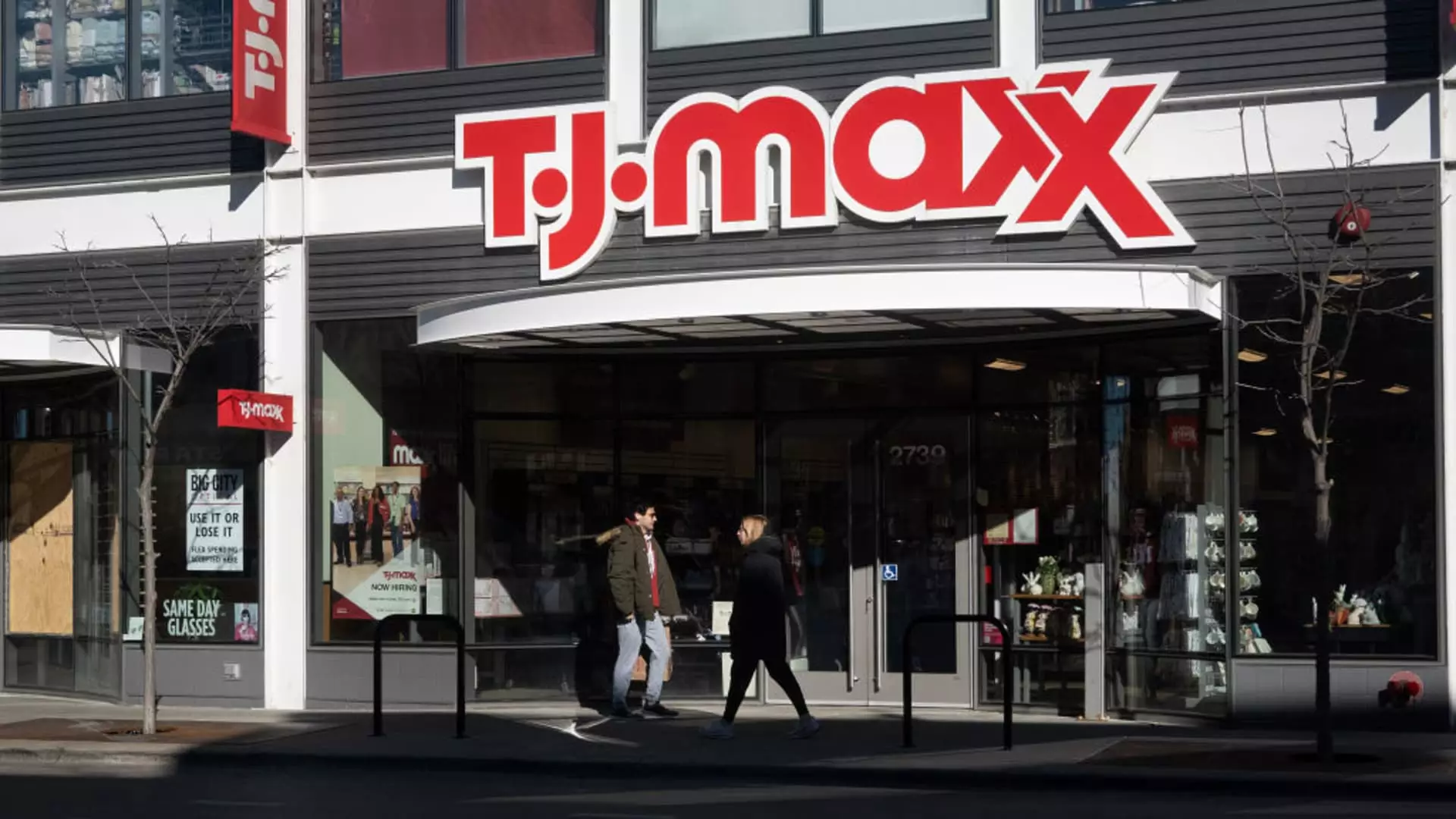TJX Companies Inc. reported a vibrant fiscal third quarter, showcasing strong revenue growth and meaningful net income figures. As the holiday shopping season rounds the corner, the company articulated a “robust start,” yet the market responded with skepticism as guidance fell short of Wall Street projections. The earnings per share (EPS) for the holiday quarter is anticipated to be between $1.12 and $1.14, significantly below the expected $1.18, as suggested by analysts from LSEG. Despite this lukewarm forecast, TJX’s results for the three-month period that concluded on November 2 unveiled an EPS of $1.14, surpassing the projections of $1.09. Revenue ascended to $14.06 billion, edging higher than Wall Street’s expectation of $13.95 billion.
The company’s fiscal performance reflects both strength and caution, suggesting a complex interplay of consumer behavior amidst broader economic currents. While TJX’s reported net income for the quarter increased to $1.30 billion compared to $1.19 billion a year ago, it signals the anticipated challenges looming on the horizon.
CEO Ernie Herrman highlighted the importance of customer transactions as driving forces behind comparable sales growth. The retailer has positioned itself as a treasure-hunt shopping destination, offering perceived value and variety—elements that resonate with diverse shoppers. The reported comparable sales growth of 3% for the upcoming holiday quarter aligns closely with StreetAccount analysts’ forecasts. However, nearly uniform growth at 2% to 3% for this critical quarter invites scrutiny regarding potential market saturation and the effectiveness of TJX’s customer engagement strategies.
The nuances of the company’s sales performance delineate varying strengths across its divisions. While the Marmaxx division, comprising T.J. Maxx, Marshalls, and Sierra stores, saw a respectable 2% growth—down from a notable 7% the previous year—this deceleration raises questions about the sustainability of TJX’s competitive edge. HomeGoods’ 3% growth, down from a prior 9%, further paints a picture of an evolving retail landscape wherein consumer habits may be shifting. Meanwhile, regions like Europe showcased resilience, providing a necessary counterbalance with a 7% comparative sales increase for TJX International.
As TJX anticipates full-year earnings between $4.15 and $4.17—representing an uptick from its previous range—it’s evident that the company remains committed to charting a growth trajectory despite the pressures of a competitive retail environment. However, the raised pretax profit margin outlook hints at the inherent tensions between managing costs and sustaining profitability.
With the continuing ascent of off-price retailers, TJX is concurrently looking globally for sustainable growth. Its recent acquisition of a 35% stake in Brands for Less highlights a strategic pivot towards international markets. Additionally, the entrance into Spain with TK Maxx in early 2026 indicates a forward-thinking approach to expansion, albeit with inherent risks tied to overseas operations.
Despite TJX’s favorable position in the market, caution looms. Analysts are acutely aware of the potential repercussions of unseasonably warm weather patterns on consumer buying behavior. The paradox exists wherein off-price retailers may be disproportionately susceptible to such fluctuations, often causing lower-income shoppers to delay discretionary purchases. If customers postpone their seasonal purchases owing to mild conditions, TJX may experience a notable dip in sales, especially as the company relies upon timely refreshes in apparel offerings for winter weather.
Such vulnerabilities underline the necessity for a nimble strategy in response to fast-changing consumer preferences. Furthermore, the need to engage younger consumers more effectively becomes ever pressing, as TJX must counteract any lingering stigma associated with off-price shopping among this demographic.
TJX Companies Inc. stands on solid financial ground entering the holiday season, yet it encounters an array of challenges that may impede its upward trajectory. As management navigates investor expectations while adapting to shifting consumer behaviors and economic uncertainties, the company’s resilience will be tested. Balancing growth with adaptability will be key, and stakeholders will watch closely to see how TJX capitalizes on existing strengths while mitigating identified risks in the coming quarters. The holiday shopping surge could be the catalyst that distinguishes TJX in a competitive landscape, but its approach during this crucial period will determine the long-term sustainability of its success.

